Unlocking new development opportunities across Essex
Homes in high demand
Essex delivers what buyers want post Covid-19, despite affordability pressures
Essex offers the space many buyers want post-pandemic. In March 2021 we surveyed 1,100 prospective home buyers and sellers. 40% said lockdown had made them prioritise a separate space to work from home. 38% said that a garden or outside space had become more important. These figures increase to 48% and 50% for buyers from London.
Essex is ideal for buyers from London. It allows the best of both worlds: more space, but easy access to London if buyers need to commute a few days a week. The median property in Essex is 8% larger than the median-sized property in London. And 89% of homes in Essex have access to a private outside space, compared to 79% of homes in London, according to data from the ONS. This outside space tends to be large. The average garden in 10 of the 14 authorities in Essex is bigger than the national average.
This explains why a greater proportion of people moving to Essex now come from London. Movers from London made up 20.3% of households moving to Essex following the first lockdown, between June and December 2020, according to data from Experian. That’s up from 18.7% between June 2017 and May 2020.
Buyer demand has risen across England as buyers try to take advantage of the Stamp Duty holiday. Changing buyer preferences have increased demand for homes in Essex even more, particularly in less urban locations. Agreed sales were 56% higher in Essex between June 2020 and mid-April 2021 than the previous year. The England average was just 43%. Uttlesford, a more rural location saw even greater growth at 69%. Agreed sales in more urban locations such as Southend-on- Sea and Thurrock were up 43% and 42%, respectively.
It’s difficult for buyers to afford homes
Essex’s attractiveness as a place to live is a double-edged sword: strong demand means house prices are high. Homes here are less affordable than the national average. The median house price in Essex is 9.35 times the median income of an Essex resident, compared to 7.84 across England. Epping Forest and Uttlesford are especially unaffordable, with house prices more than 11 times local incomes.
Affordability pressures have grown faster in Essex than England. The ratio of house prices to earnings has grown by 16% in Essex since 2015. The national average rose just 4%.
Prices will continue to rise
The rush to buy before the Stamp Duty holiday ends has pushed house price growth across the country to historic highs. Before the pandemic, price growth had flattened across Essex. Affordability pressures in the county suggested room for further price growth was limited and the ONS reported -1.8% price falls in 2019.
Yet values in Essex rose 7.1% in the year to March 2021, despite the pandemic, according to the ONS. The Stamp Duty holiday supported this growth. But strong demand for housing in Essex due to changing buyer preferences has boosted values too.
We expect strong price growth to continue across the East of England in the near term. We forecast 5.0% growth in 2021 and 4.5% in 2022. But as lifestyle drivers give way to economic fundamentals we expect a return to the normal pattern of price growth that we would expect at this point in the housing market cycle. We forecast 2.5% house price growth in 2023 and 2024 and 1.5% in 2025 across the East of England.
Housebuilders may need to help buyers
Affordability is even more stretched for new homes. Average capital values for new homes in Essex were 9% more expensive than existing homes over the three years to December 2020. Affordability will only tighten as prices continue to rise and as Help to Buy ends.
Help to Buy supported 57% of new home sales across Essex in the two years to September 2020. It supported more than 70% of sales in Harlow, Castle Point and Thurrock. But now the scheme is restricted to first-time buyers and the price cap has fallen from £600,000 to £407,400. The scheme will end for good in March 2023.
Government guarantees and a buoyant market have encouraged lenders to offer 95% mortgages again. But these are often not available for new build homes. New home buyers with smaller deposits will have far less buying power unless developers create their own schemes to maintain mortgage availability.
Currently, some developers are focused on offering private mortgage guarantee products. Developers also need to consider the mix of homes they build to reflect buyers’ reduced ability to pay.
Government support means detached houses make a greater share of sales in Essex for new homes, 38%, than for existing stock, 27%. The average detached new home in Essex sold for £487,390 in the three years to December 2020. The average new semi-detached and terraced homes were over 25% cheaper, whilst a new flat was almost 50% cheaper at £253,341. Housebuilders will need to build fewer detached houses and more cheaper homes once Help to Buy ends.
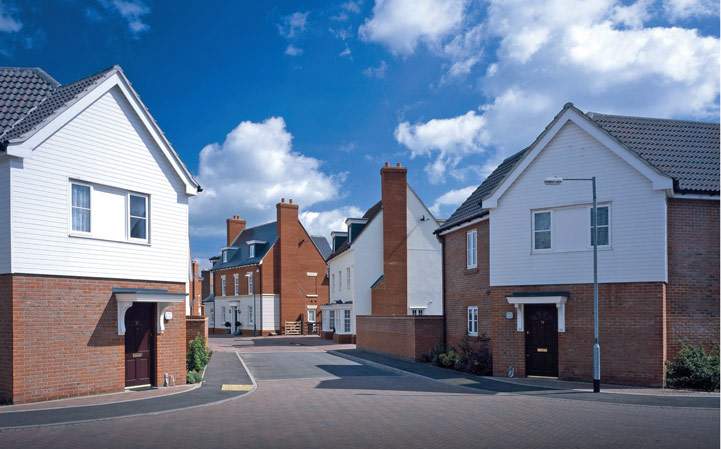
Beaulieu Park in Chelmsford
Build to Rent offers another route to market
Homes designed for renters make up a growing proportion of delivery in Essex. Basildon has seen the most Build to Rent (BTR) investment within Essex. Trafford House, a development of 384 flats completed in 2016, was Essex’s first foray into BTR. There are also plans for 492 BTR flats at Market Square and 535 BTR flats at Basildon Town Square. The 2,800 home Eastgate Shopping Centre development, which received the green light in April, will include BTR homes alongside homes for sale.
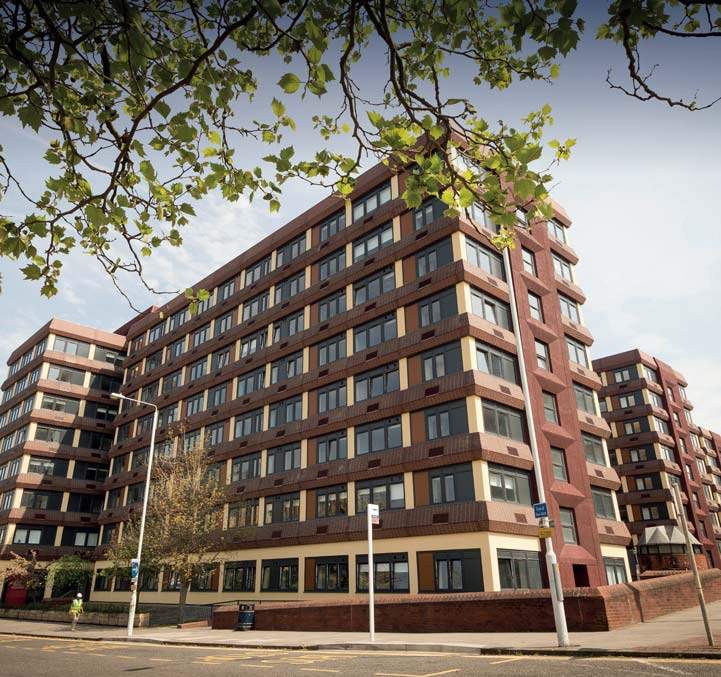
Trafford House in Basildon
Most operational BTR homes across England are urban flats. But at Base Newhall in Harlow, family homes are being Built for Rent. This kind of ‘Suburban Build to Rent’ scheme aims to provide family rental housing in suburban locations.
Suburban Build to Rent currently accounts for only 10% of operational BTR. But the number of renters aged over 35 has grown rapidly over the past five years. Many of these renters are looking for family homes in the suburbs. In the past year, the number of planning consents for BTR homes in suburban locations grew from 470 to over 2,000. Interest in this sector continues to grow. We expect BTR delivery to ramp up in suburban locations over the next few years.
Increasing demand for land supports land value growth
A lack of supply of development land in addition to rising demand is leading to some upward pressure on land values. Supported by a strong housing market, there is an increasing appetite for land amongst small and medium-sized developers, housing associations, and major housebuilders looking to replenish their land pipelines, coupled with increasing investment in BTR. But supply is limited, particularly for sites of 50–150 homes.
In the year to Q1 2021, Eastern greenfield and urban values grew by 0.9% and 1.1% respectively, outstripping national growth in land values
Lydia McLaren, Associate, Residential Research
In the year to Q1 2021, greenfield and urban land values in the Eastern region grew by 0.9% and 1.1%, respectively, outstripping growth in national land values. UK greenfield and urban values rose by 0% and 0.8% over the same period.
Infrastructure is key to unlocking development
Infrastructure unlocks new opportunities for development across Essex
Over 100,000 homes are in the development pipeline across Essex, ranging from allocated sites to sites under construction. The county also has several major strategic infrastructure projects planned, including some supported by the Housing Infrastructure Fund (HIF). Those supported by the HIF funding are well planned to support development. But some of the more strategic infrastructure is not joined up with local development plans, slowing delivery and increasing reliance on cars. If local authorities are serious about tackling both the climate and the housing crisis, they must align their housing and infrastructure strategies to maximise both delivery and sustainability.
HIF key to unlocking delivery
Across Chelmsford, Colchester and Western Essex, Housing Infrastructure Funding (HIF) is unlocking new homes.
Chelmsford accounts for more than a fifth of the immediate housing pipeline in Essex. HIF-backed transport improvements in North East Chelmsford will help ease pressure on the existing transport network, enabling this level of development.
More than 4,000 homes are under construction in North East Chelmsford, at Beaulieu Park and Channels. Chelmsford’s Local Plan allocated a further 3,000 homes in the North East and there is capacity for 2,500 additional new homes in the area after 2036. This quantum of development is only possible because of a new rail station at Beaulieu Park and a North East bypass, financed by £218m of HIF. The station will enable residents to reach London Liverpool Street station within 40 minutes and will reduce pressure on Chelmsford station, the busiest two-platform non-London railway station in the UK.
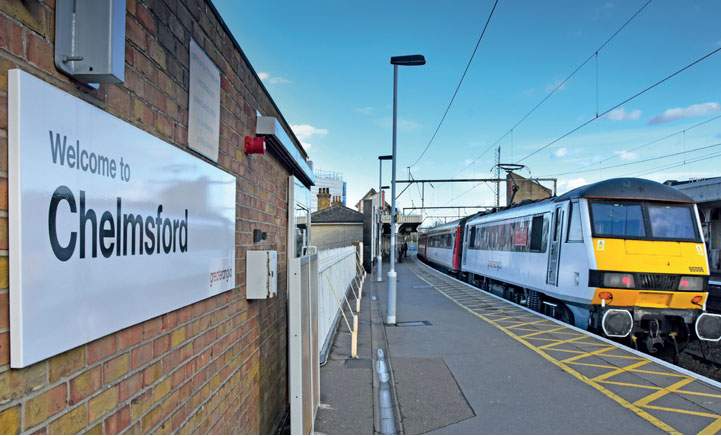
Chelmsford train station
During peak periods, there is only 4% space left on Chelmsford’s highways, according to the Chelmsford HIF bid. But the new North East bypass and the widening of the A12 will allow a greater volume of traffic flow at peak times, accommodating the increase in road users from the new developments.
In Western Essex, the HIF will help the transport network cope with the increased volume of users. HIF will fund new, high-quality bus, walking and cycling links to Harlow town centre, an additional road link over the River Stort and A1019 improvements. A new junction 7a of the M11 is also under construction. These projects will facilitate the development of three large urban extensions of around 6,500 new homes in Harlow and Epping Forest and 10,000 homes in East Hertfordshire. The urban extensions account for almost half of Harlow and Epping Forest’s pipeline.
HIF has unlocked development in Colchester too. A new rapid transport system and a new link between the A120 and A133 will enable 7,500 new homes at a new Garden Community on the borders of Colchester and Tendring.
Major strategic infrastructure in South Essex provides opportunities for development
Two major strategic infrastructure projects could help unlock new development in South Essex: the Lower Thames Crossing and Crossrail.
The Lower Thames Crossing will link the M25, A13 and M2 and is part of the Government’s Road Investment Strategy 2 (2020 to 2025). Creating more than 14 miles of new road, it will be one of the UK’s biggest road projects since the M25. This could lead to improved access and connectivity in the Thurrock Thameside/A13 corridor, supporting further residential and economic development. But there are concerns from local government that the Lower Thames Crossing will increase traffic on local roads and that plans are not yet joined up with local development strategies. A planning application for the scheme was withdrawn in late 2020, but a further application is expected imminently.
Brentwood and Shenfield stations are part of the new Crossrail line, due to open in the first half of 2022, which will provide an improved train service with direct links to Central London. The Brentwood Draft Local Plan allocates over 800 homes at Officer’s Meadow in Shenfield, a 15-minute walk from Shenfield station. Brentwood Borough Council and Morgan Sindall Investments have formed a joint partnership to deliver new homes on council-owned land across the district, including sites close to the town centre and Crossrail stations. But the largest allocation in Brentwood is Dunton Hills Garden Village, a new settlement over 10 minutes’ drive from Brentwood station.
To support these new homes further from existing urban centres, there must be improvements to supporting local infrastructure, such as the A127, alongside large strategic infrastructure improvements. Although some improvements are planned by Essex Highways, there is demand for greater investment in the A127 from the A127 Task Force to unlock development. The A127 is already Essex’s busiest non-trunk road and is busier than parts of the M11, according to Essex Highways. As well as the 2,700 homes planned at Dunton Hills Garden Village, over 1,500 homes are allocated at both South Billericay and around Wickford in close proximity to the A127.
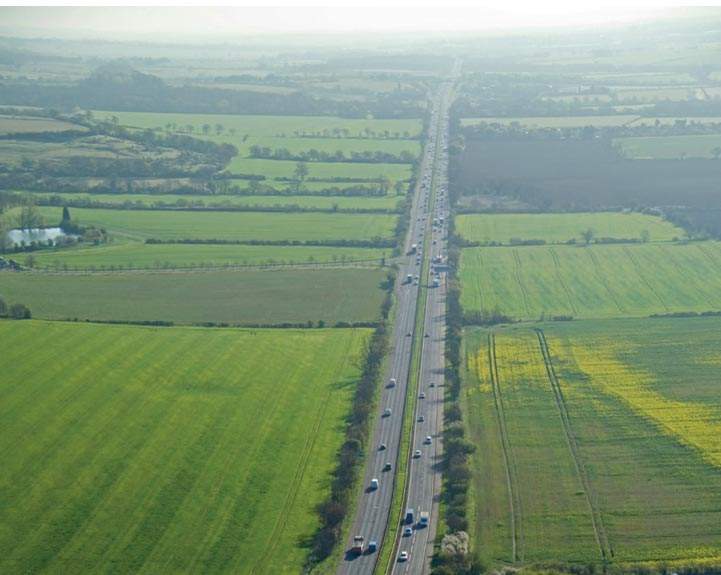
The A127
Poor infrastructure capacity uproots garden villages in Northern Essex
Uttlesford and the three North Essex authorities (Braintree, Colchester and Tendring) have had plans for garden communities frustrated by the Planning Inspectorate, and Uttlesford District Council had to withdraw their Plan in 2020. This led to the withdrawal of more than £270 million of HIF funding to improve the A12 and A120.
The joint Section 1 of the Northern Essex local authorities’ Plans had to be rewritten to include only one of the three original garden communities. These plans for garden villages were rejected due, in part, to transport concerns, including around the creation of Rapid Transport Systems. These transport issues could create communities dependent on cars.
Is development coming forward in the most sustainable locations?
Between 2009 and 2019, the number of miles driven by vehicles on Essex’s roads increased by 1.4 billion miles. Road transport currently accounts for almost half of Essex’s carbon footprint. Nine local authorities in Essex have declared a climate emergency, with eight setting a target of achieving net-zero carbon by 2030.
Many of the infrastructure plans within Essex are road-based. Only one new station is planned within Essex at Beaulieu. New stations not only help development to be more sustainable but people are often willing to pay more for properties with greater connectivity. Our research shows that residential values have increased around new transport infrastructure in Birmingham, Manchester and London.
Essex already has an existing network of 89 rail stations. Building homes around these stations could provide ideal locations for sustainable development. South Essex authorities Southend-on-Sea, Thurrock, and Basildon have the highest proportion of development coming forward within 1km of an existing station, accounting for 95%, 62% and 58% of homes in the pipeline. Whilst locations within 1km of stations can be best for sustainable transport, further funding may be required to ensure there is enough rail capacity to cope with increased passenger numbers.
Sustainable development can also be achieved by building close to key amenities to reduce reliance on cars: either by developing near existing urban centres or incorporating those amenities into new schemes. New developments will need to incorporate sufficient walking and cycling routes. The Government’s Ten Point Plan sets a goal of delivering more than 1,000 miles of safe walking and cycling routes by 2025.
The North-South divide
Green Belt constraints play a central role in under-delivery in South Essex
Local authorities in North Essex are meeting housing need; authorities in South Essex are not*. Despite the increasing Government emphasis and support for brownfield development, this alone will not provide enough homes to meet need. Green Belt constraints play a central role in under-delivery in South Essex and local authorities need to amend their Green Belt boundaries, including adding new greenfield sites, to meet housing need. But they will feel little motivation to do so without greater incentives from central Government.
Need in Essex also relates to the level of undersupply in London and the lack of land in London to meet housing need. 41,720 homes were delivered in London in the year to March 2020, around 10,000 homes short of the new London plan target. Around a fifth of movers to Essex come from London, putting further pressure on housing need across Essex.
Delivery across Essex has been similar to delivery across England, with an average annual delivery rate of 1.0% of stock over the three years to March 2020. But this hides a wide range of delivery rates across the county, ranging from 2.1% in Uttlesford to 0.4% in Castle Point. Not enough homes are being built in Essex to meet need.
Authorities in the north of Essex have higher delivery rates than those in the south. The average delivery rate in the six South Essex Local Authorities (Basildon, Brentwood, Castle Point, Southend-on-Sea, Rochford and Thurrock) was just 0.7% compared to 1.3% across the other eight authorities, over the three years to March 2020*.
Not only are delivery rates lower across South Essex but the level of delivery is not meeting need. Five of the six South Essex local authorities failed the 2020 Housing Delivery Test (HDT) and face presumption in favour of sustainable development, where sites need to be granted permission when there are no relevant plan policies unless the adverse impact of the development clearly outweighs the benefits.
All of these South Essex authorities have faced presumption in favour of sustainable development already over recent years due to not adopting a post-NPPF Local Plan. Yet delivery has remained low. This is because there is an exception to presumption in favour of sustainable development is when specific National Planning Policy Framework policies provide a clear reason for refusal. Falling within the Green Belt is one such clear reason.
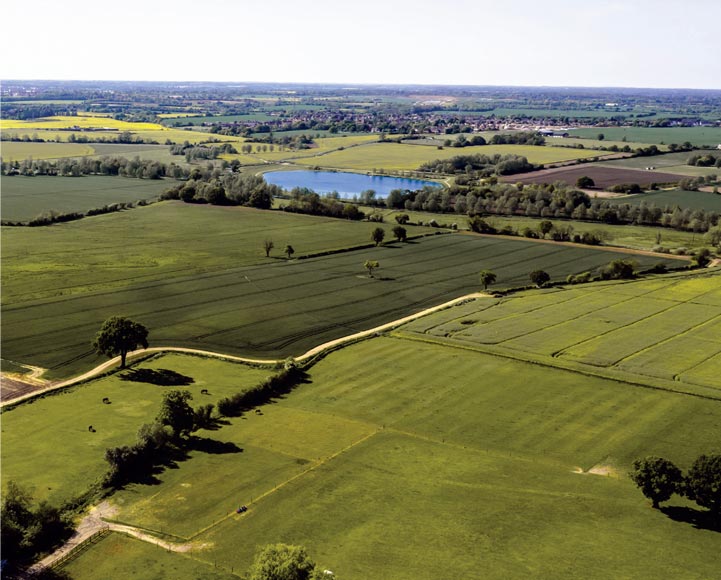
Greenfield land in Essex
Green Belt restricting delivery
Across South Essex, the Green Belt makes up the vast majority of undeveloped land. Over half of all land in Brentwood, Basildon, Thurrock, Castle Point and Rochford is designated as Green Belt. Epping Forest, the only authority outside of South Essex to face presumption in favour of sustainable development, is also dominated by the land constraint with over 90% of land designated as Green Belt.
Some councils are releasing Green Belt land
Councils are starting to recognise the need to release land from the Green Belt, including on greenfield sites, to meet housing need. In its Draft Local Plan, Basildon plans to reduce Green Belt coverage from 63% to 59% of the local authority. This will provide enough land for 8,612 new homes. Brentwood plans to release 1% of land from the Green Belt, enabling the construction of 2,700 homes at Dunton Hills Garden Village.
Epping Forest has made multiple changes to the Green Belt. This will enable the creation of three large urban extensions on the outskirts of Harlow and the construction of over 1,000 homes at North Weald Bassett.
But Local Plan progress is slow
But for Green Belts to be amended, Local Plans need to be adopted. Progress on Local Plans has been slow across Essex, with only Harlow, Chelmsford and Maldon adopting a post- NPPF Plan. Three Green Belt authorities, Thurrock, Southend-on- Sea and Rochford, are yet to submit a draft Local Plan.
The six South Essex Authorities (Basildon, Brentwood, Castle Point, Rochford, Southend on Sea and Thurrock) are creating a Joint Strategic Plan to effectively unlock delivery of new homes across South Essex. To be most effective, this Joint Strategic Plan should review the Green Belt across South Essex.
Land around railway stations is ideal for development, encouraging lower levels of private car use
Lydia McLaren, Associate, Residential Research
And more land could be released close to urban centres
We need to do more. It is critical that local authorities releasing land from Green Belt do so in the right places. New homes need to be delivered in sustainable locations. Land around railway stations is ideal for development, encouraging lower levels of private car use. There are 3,564 hectares of green belt land within Essex within 1km of railway stations, excluding land on flood plains, SSSIs, AONBs, and Ancient Woodland that would be unsuitable for development. If all this land were developed at a density of 40 homes per hectare, 142,580 homes could be delivered within 1km of an existing rail station. This would meet housing need in Green Belt local authorities for around 20 years.
